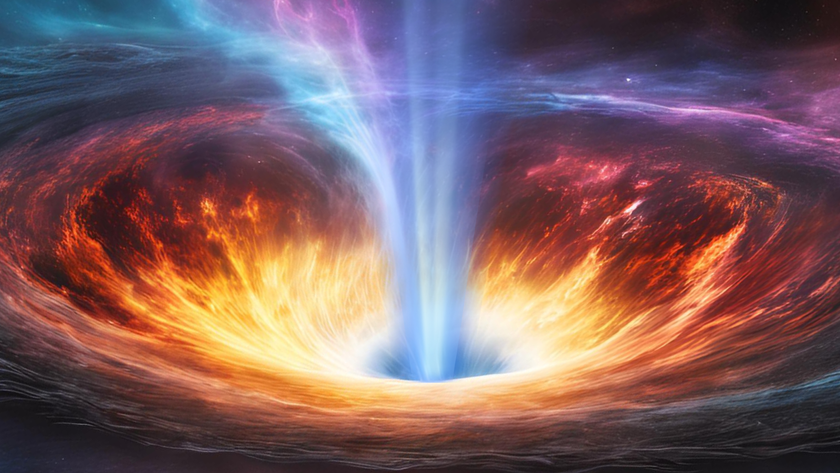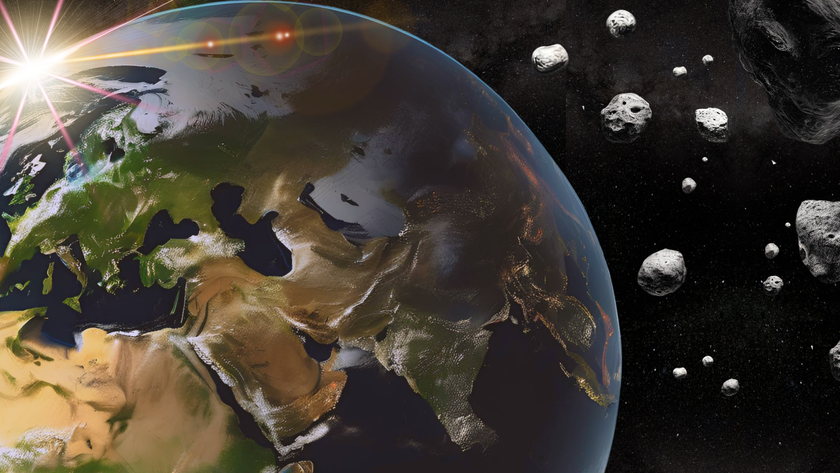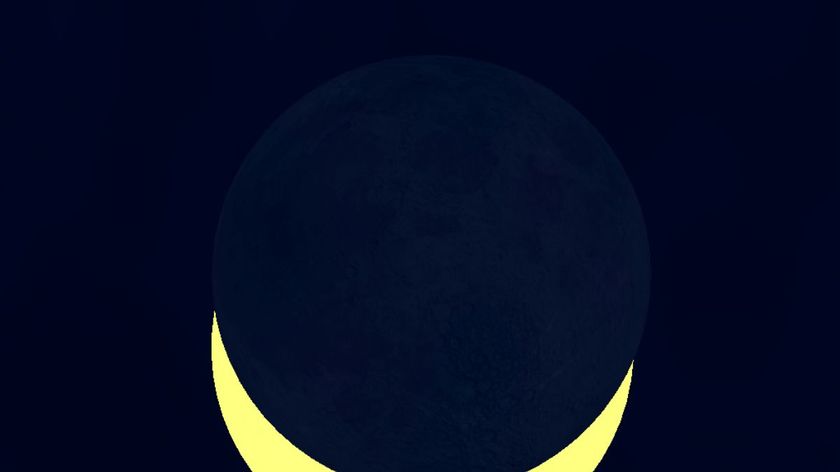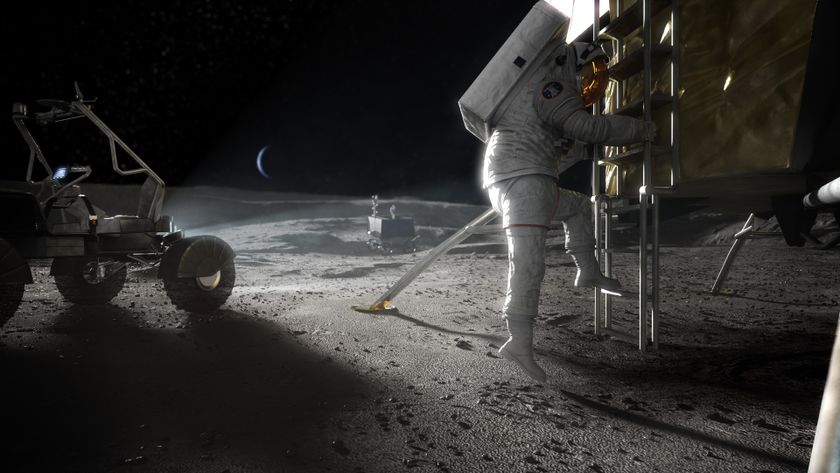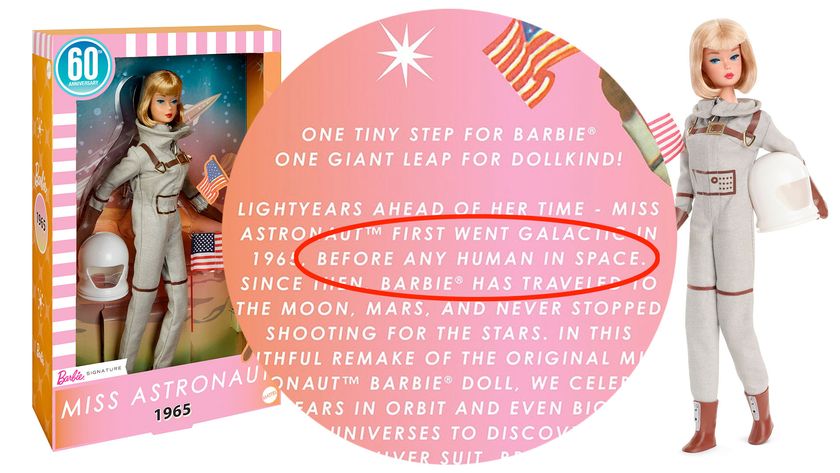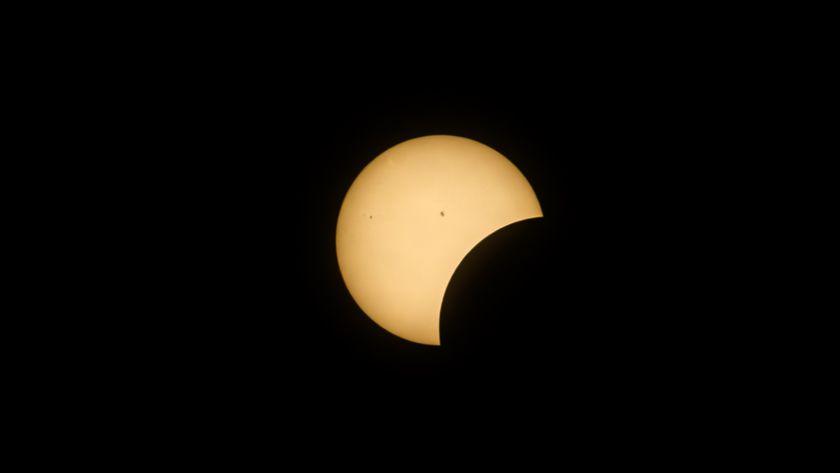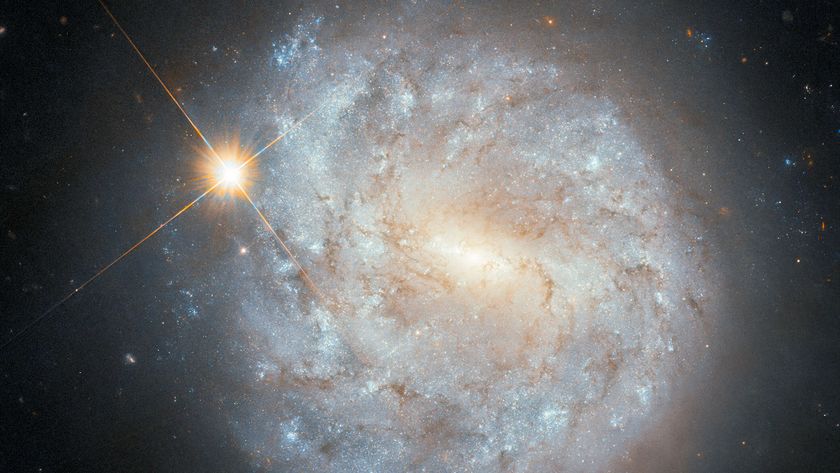Rock Solid Link: Asteroid Doomed the Dinosaurs
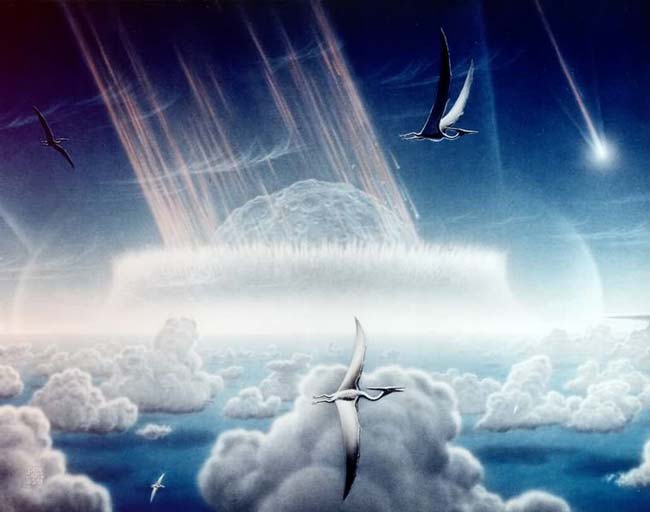
THEWOODLANDS, Texas ? Scientists have debated for two decades whether a giantspace rock wiped out the dinosaurs or if some other catastrophe did the deed.
Now,a blue-ribbon panel of scientists has banded together to support the linkbetween the Chicxulubasteroid impact crater in Mexico?s Yucat?n Peninsula with the massextinction of dinosaurs and the majority of life on our planet 65 million yearsago.
?Itis an international consensus. They are saying that there?s a rock solid linkbetween the Chicxulub impact event and the K-T boundary mass extinction,? saidDavid Kring, a Senior Staff Scientist and geologist at the Lunar and PlanetaryInstitute in nearby Houston.
TheK-T boundary refers to a layer of iridium-rich clay that marks the end of theCretaceous period 65 million years ago. Iridium is a chemical element commonlyfound in asteroids and comets and the K-T boundary has been held up as thetail-ending tale of an asteroid impact that snuffed out the dinosaurs.
Itwas Kring, nearly 20 years ago, that announced the discovery of shocked quartzand other evidence of a huge, out of the sky wallop from a mile-deep (1.6 km)drill hole into a buriedcrater on the Yucat?n Peninsula of Mexico.
Kringand his team named the crater Chicxulub for a Mayan village above the center ofthe crater. That Mayan word means ?tale of the devil,? which Kring thought anideal name for a dinosaur-killingasteroid impact.
?Nineteenyears ago I thought the case was pretty solid,? Kring said. ?The internationalcommunity has been poking at this for nearly two decades,? he told SPACE.comduring the 41st Lunar and Planetary Science Conference (LPSC) being held herethis week.
Get the Space.com Newsletter
Breaking space news, the latest updates on rocket launches, skywatching events and more!
Infact, that announcement ? with co-authors William Boynton and Alan Hildebrand ?was made at the LPSC in 1991.
Combiningall available data
Now,fast forward to this week.
Ateam of over three dozen scientists from around the world will report on theirconsensus in Science magazine on Friday.
Leadauthor of the paper, Peter Schulte, Assistant Professor at the University ofErlangen in Germany, said in a press statement: ?Combining all available datafrom different science disciplines led us to conclude that a largeasteroid impact 65 million years ago in modern day Mexico was the majorcause of the mass extinctions.?
Kringsaid that with any extraordinary discovery there is a natural interest inconfirming it?that?s the scientific method.
?Youneed to have a testable hypothesis and you need to confirm it with multiplelines of evidence,? Kring added. ?What?s important is for the internationalcommunity to have that opportunity to review the data and make up their ownminds.?
Tenetsof geological sciences
?Wesaw the very same thing with the concept of plate tectonics ? which we all nowaccept,? Kring said. ?But the concept of an impact mass extinction hypothesisis as revolutionary?and there are going to be people who just are not going toaccept it.?
Kringnoted that there are specialists in the historical importance of scientificideas that have compared and contrasted the impactmass extinction hypothesis and its impact on the tenets of geologicalsciences.
?Theyhave concluded that it is actually, fundamentally, a larger shift, a biggerchange, than the theory of plate tectonics,? Kring said.
Soit?s not surprising, Kring added, that there will be those in the unconvincedcamp. That said, there is a huge consensus reflected and represented by theSchulte-led paper in Science magazine, he concluded, published coincident withthis year?s Lunar and Planetary Science Conference.
- Top10 Greatest Explosions Ever
- A BriefHistory of Dinosaurs
- Dinosaur-KillingFirestorm Theory Questioned
LeonardDavid has been reporting on the space industry for more than five decades. Heis past editor-in-chief of the National Space Society's Ad Astra and SpaceWorld magazines and has written for SPACE.com since 1999.
Join our Space Forums to keep talking space on the latest missions, night sky and more! And if you have a news tip, correction or comment, let us know at: community@space.com.

Leonard David is an award-winning space journalist who has been reporting on space activities for more than 50 years. Currently writing as Space.com's Space Insider Columnist among his other projects, Leonard has authored numerous books on space exploration, Mars missions and more, with his latest being "Moon Rush: The New Space Race" published in 2019 by National Geographic. He also wrote "Mars: Our Future on the Red Planet" released in 2016 by National Geographic. Leonard has served as a correspondent for SpaceNews, Scientific American and Aerospace America for the AIAA. He has received many awards, including the first Ordway Award for Sustained Excellence in Spaceflight History in 2015 at the AAS Wernher von Braun Memorial Symposium. You can find out Leonard's latest project at his website and on Twitter.
